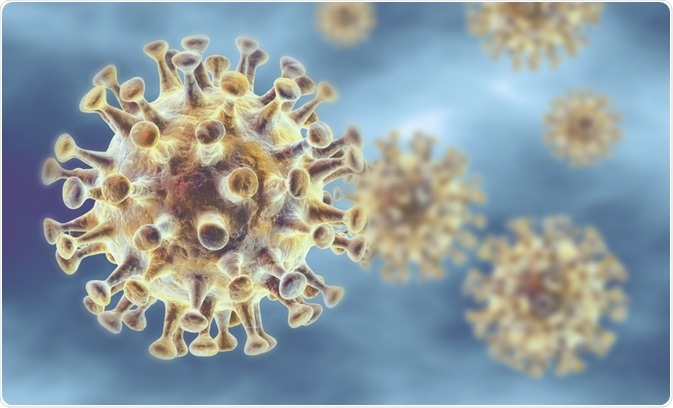Virology is the study of viruses and virus-like agents, including, but not limited to, their taxonomy, disease-producing properties, cultivation, and genetics. Virology is often considered a part of microbiology or pathology.

Image Credit: Axel_Kock / Shutterstock.com
During the early years of virology, this discipline was dependent upon advances in the chemical and physical sciences; however, viruses soon became tools for probing basic biochemical processes of cells.
Viruses have traditionally been viewed in a rather negative context as agents responsible for diseases that must be controlled or eliminated. However, viruses also have certain beneficial properties that can be exploited for useful purposes, as is evident in both gene therapy and vaccinology.
Characteristics and classification of viruses
Following the announcement of the initial operational definition of a virus as a filterable agent, attempts were made to identify the properties of viruses that separated them from other microorganisms. To this end, the single defining feature of all viruses is that they are obligate intracellular molecular parasites.
A second inviolate property of viruses is that they do not reproduce by binary fission, which is a method of asexual reproduction where pre-existing cells split into two identical daughter cells. For viruses, the process of reproduction is akin to an assembly line, in which different parts come together to create new viral particles.
In general, viruses contain only one type of nucleic acid (either DNA or RNA) that carries the information necessary for viral replication. Nevertheless, it is clear now that some viruses contain other nucleic acid molecules; for example, in retroviruses, cellular transfer RNAs are essential for the action of the enzyme reverse transcriptase.
The chemical composition of viruses varies between different virus families. For the simplest of viruses, the virion is composed of viral structural proteins and nucleic acid; however, the situation becomes more complex with when dealing with enveloped viruses. The latter types of viruses mature by budding through different cellular membranes that are modified by the insertion of viral proteins.

Image Credit: Design_Cells / Shutterstock.com
Several properties should be considered most important in constructing a scheme for the classification of all the viruses. These include the nature of the nucleic acid present in the virion, the symmetry of the protein shell, dimensions of the virus particle, as well as the presence or absence of a lipid membrane.
The International Committee on Viral Taxonomy (ICTV), which was given the task of developing a universal taxonomic scheme for all the viruses, has put an emphasis on the viral genome, which is a blueprint for producing new virusesm as a basis of all classification decisions.
In formal virus taxonomy, families, subfamilies, and genera are always written in italics, with the first letters of the names capitalized. Instead of formal names (e.g. Parvoviridae), common names are often used for viruses, as can be seen in the various different kinds of medical literature (e.g. parvoviruses).
Study of viruses
Even from the earliest times, it was clear that the filterable agents could not be cultivated on artificial media. Even today, virus isolation in cell culture is still considered the gold standard against which other assays must be compared.
Still, the most obvious method of virus detection and identification is direct visualization of the agent. The morphology of most viruses is sufficiently characteristic to identify the image as a virus and to assign an unknown virus to the appropriate family. Furthermore, certain non-cultivable viruses can be detectable by electron microscopy.
The culture of animal cells typically involves the use of a culture medium containing salts, glucose, vitamins, amino acids, antimicrobial drugs, buffers, and, typically, blood serum, which provides a source of necessary cellular growth factors. For certain cell-lines, defined serum-free media have been developed, which contain specific growth factors without requiring the addition of blood serum into the medium.
Serological tests are used to show the presence or absence of antibodies to a specific virus. The presence of certain antibodies indicates exposure to the agent, which may be due to a current clinical condition or as a result of an earlier unrelated infection. Some tests that can be used to identify viral antibodies include hemagglutination, complement fixation tests, radioimmunoassays, immunofluorescence, enzyme-linked immunosorbent assay (ELISA), radioimmune precipitation, and Western blot assays.
Molecular techniques such as polymerase chain reaction (PCR) are also widely used for both the detection of an active virus as well as to determine whether any antibodies against the virus are present. Some of the different applications of PCR tests can be found in diagnostic clinical virology, as well as for research purposes. The use of such nucleic acid-centered technology offers substantial advances in the detection of viruses and can be further enhanced with the incorporation of certain nucleic acid hybridization techniques.
References
Further Reading